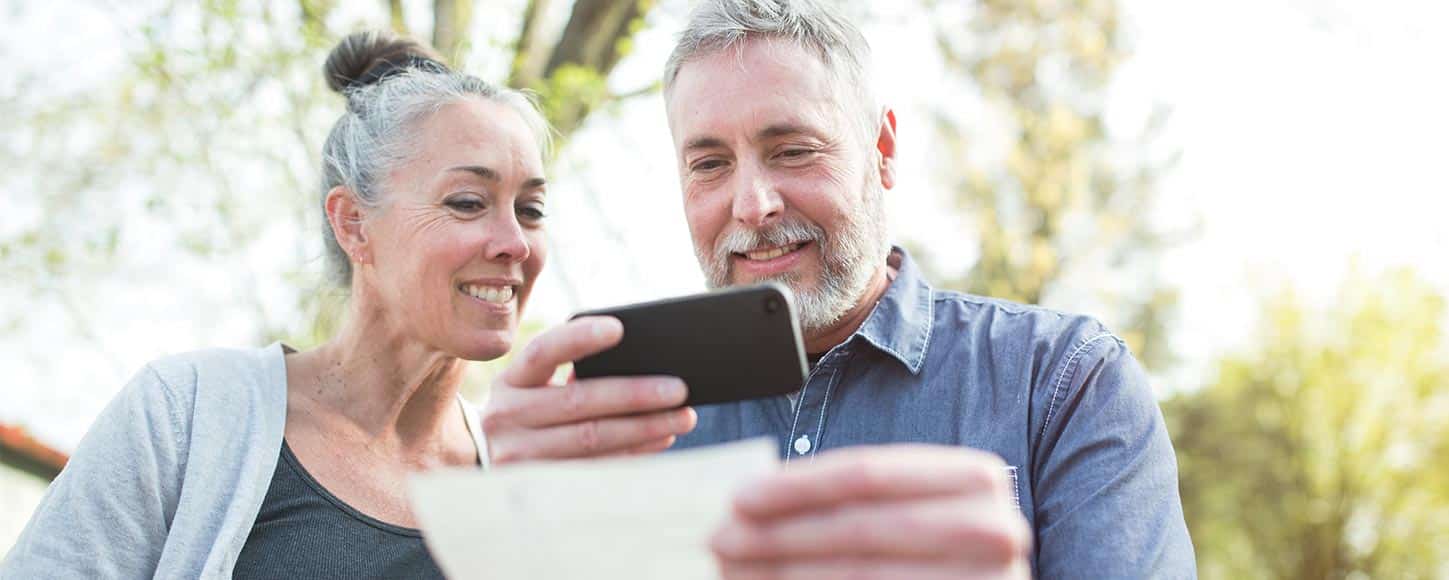
Today’s technology has made banking faster, easier, and more accessible than ever before, with many tools allowing customers to bank whenever and wherever they’d like. According to Business Insider, 70% of American bank account holders use mobile banking as their primary way of managing their accounts. And the coronavirus pandemic has accelerated the consumer usage of bank’s online and mobile banking services. According to the Financial Brand, 30% of consumers have increased their mobile banking usage and 35% have increased their online banking usage.
While these digital banking tools are convenient and secure, it’s always good to be mindful about taking extra security measures that can thwart a cybersecurity risk, thus decreasing the chance of a bank account being hacked; or worse – life savings being lost.
Here are some tips to help you step up your security game and protect your finances.
Create Strong Passwords
A critical step to securing your bank account is to create a strong password for your online accounts. Depending on who you ask, there are several ways to create a strong password, but lately, the emphasis has been on password length over complexity, as the longer your password is, the more difficult it will be to guess. Try to think of an easy to remember, nonsensical phrase that’s at least 12 characters, and includes a number, symbol, and a mix of capital and lowercase letters. Avoid using any personal information such as family or pet names and birthdays.
Turn On Two-Factor Authentication
Two-factor authentication for online and mobile banking can add another level of security to your accounts. While banks today often include two-factor authentication, it’s a customer’s job to make sure these features are turned on. For example, as the second step in your login process, your bank may offer to send you a unique code via a text message to enter in to your login before you gain entrance to your account. On mobile, other standard two-factor authentication tools include using a phone’s built-in biometric reader that uses your fingerprint or face to access your account. No matter which method you choose, taking the time to turn on two-factor authentication for your bank account will help protect you in the long run.
Educate Yourself on Phishing Scams
Online scams are on the rise this year, and phishing scams (scams that try to trick you into revealing sensitive information) in particular are becoming more common. In fact, many phishing scams pretend to be trusted institutions like your bank to access your accounts and steal your money. On top of doing a little research about what to look out for, it’s important to remember that your bank will never reach out to you to ask for your account number, online username or password, or Social Security number. If you ever get a suspicious call, text, or email, call the number on the back of your bank-issued debit card to speak to your bank directly.
Check Your Account Regularly
While checking your bank account every day may sound excessive, it can be critical to discover fraudulent transactions early and prevent future ones. Online and mobile banking can make checking your account regularly incredibly convenient, but developing a consistent habit can be easier said than done. Consider creating an alarm on your phone or add “check bank account” to your weekly to-do list to get into the habit of checking it regularly.
Set Up Online and Mobile Alerts
Online and mobile banking often include fraud alert features so that you can be notified of any unusual behavior immediately via email, text message, or phone call. Take the time to think about your banking habits and what would be considered out of the norm. Then set alerts related to frequent deposits or payments, large purchases, check processing status, to name a few. That way, you’ll be notified of unusual behavior as soon as it happens. You can do the same with your credit and debit cards by using debit card controls within your bank’s mobile app
Don’t Forget to Secure Your Own Devices
While securing your online and mobile accounts is great, don’t forget about the devices you use to access them. After all, if you lose your phone or your laptop gets stolen, your bank information or money becomes vulnerable as well. Create strong passwords for your computer and mobile devices and make sure to lock them when not in use, even at home. Don’t leave devices outside or in your car unattended. Finally, avoid accessing your accounts or making purchases with your card on shared devices or by using public, unsecured WiFi.
Conclusion
Banking where ever, whenever you want has never been easier, and the tools to get that done have never been more secure. But it’s still up to you to ensure that you are taking advantage of all there is to offer. If you’re concerned you’re not doing enough to keep your accounts secure, reach out to your bank for assistance to set them up. Taking just a few of these simple steps will help protect you, your data and your money, which makes it certainly worth your time.
To learn more about the suite of secure digital banking services Union Savings Bank offers, including our contactless USB Debit Card, visit unionsavings.com